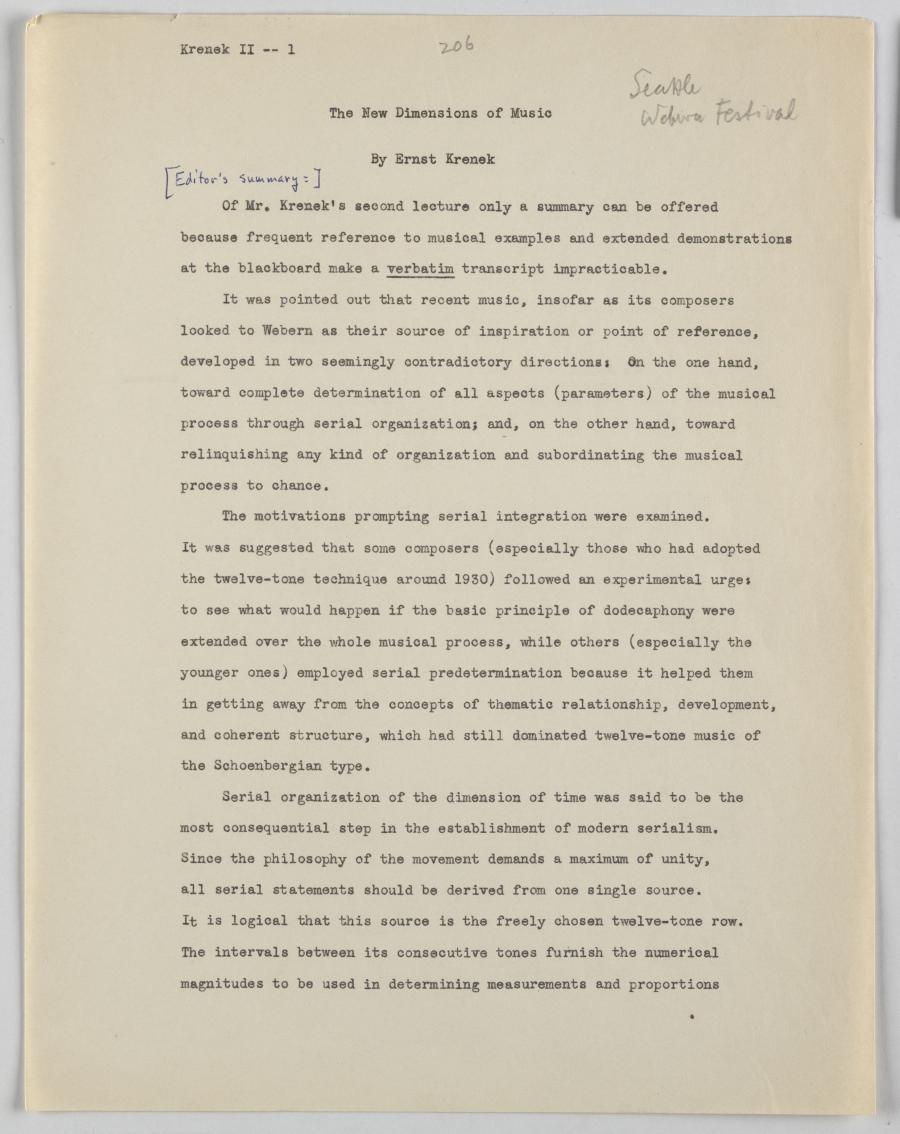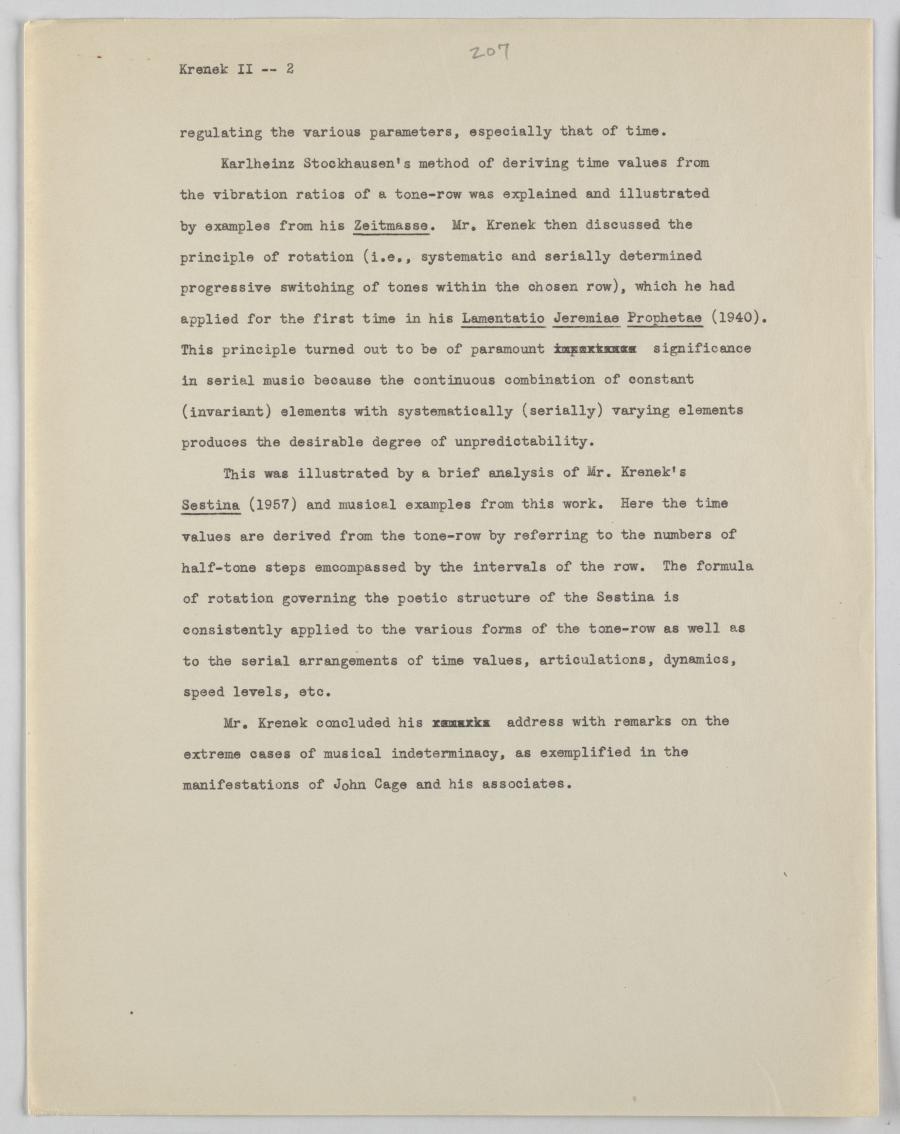The new dimensions of music
Abstract
Diese für die Veranstalter des Seattle Webern Festivals 1962 geschriebenen Zusammenfassung seines Vortrags „New Dimensions of Music“ betont Kreneks auch in seinen akademischen Lehrveranstaltungen bevorzugten Stil des freien Vortrags, der durch zahlreiche am Klavier vorgetragenen Beispiele gestützt wurde. In seinem Vortrag beschreibt Krenek die insbesondere in den Darmstädter Ferienkursen geformten Trends der jüngeren Komponistengeneration: einerseits der sich auf Webern beziehende Serialismus und andererseits das Komponieren mit Zufallsprinzipien, wodurch die tendenziell totale Organisation musikalischen Materials durch den Serialismus aufgelöst erscheint.
Eine als geschlossener kurzer Text formulierte Fassung des Vortrags wurde im Tagungsband „Anton von Webern: Perspectives“ (1966) veröffentlicht.
Of verbatim transcript impracticable.
It was pointed out that recent music, insofar as its composers
looked to
The motivations prompting serial integration were examined.
It was suggested that some composers (especially those who had adopted
the twelve-tone technique around 1930) followed an experimental urge:
to see what would happen if the basic principle of dodecaphony were
extended over the whole musical process, while others (especially the
younger ones) employed serial predetermination because it helped them
in getting away from the concepts of thematic relationship, development,
and coherent structure, which had still dominated twelve-tone music of
the
Serial organization of the dimension of time was said to be the most consequential step in the establishment of modern serialism. Since the philosophy of the movement demands a maximum of unity, all serial statements should be derived from one single source. It is logical that this source is the freely chosen twelve-tone row. The intervals between its consecutive tones furnish the numerical magnitudes to be used in determining measurements and proportions
207regulating the various parameters, especially that of time.
Zeitmasse.
Lamentatio
Jeremiae
Prophetae
This was illustrated by a brief analysis of Sestina (1957) and musical examples from this work. Here the time
values are derived from the tone-row by referring to the numbers of
half-tone steps emcompassed by the intervals of the row. The formula
of rotation governing the poetic structure of the

